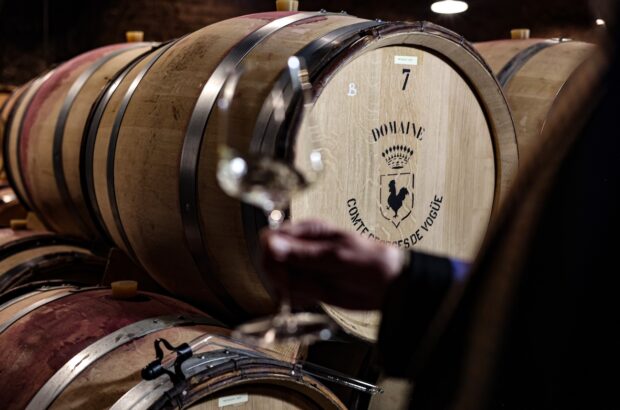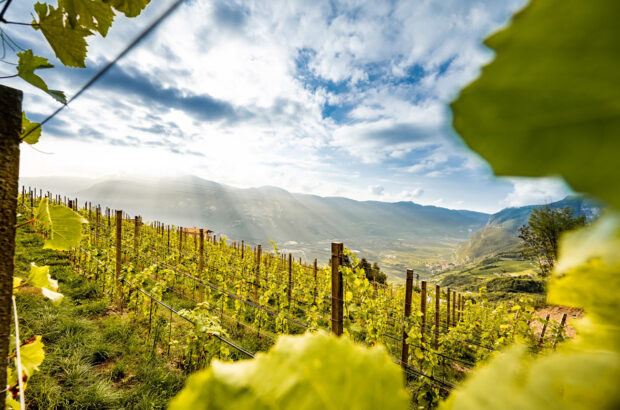Back in May, I had a chance to renew my acquaintanceship with the wines of Clos de Tart, the 7.5 ha walled Grand Cru wedged between Bonnes Mares and Clos des Lambrays.
The vineyard lies just above the village of Morey-St Denis; the 280-metre contour line runs through its heart, as it does in Clos de la Roche. Burgundy has 33 Grands Crus, but only five of them are in single-ownership; these are locally known as monopoles.
Of the five, this is the biggest. All Burgundy’s Grands Crus are appellations in their own right, so these are five of only seven single-owner AOCs in France.
The two non-Burgundians are Coulée de Serrant, Nicolas Joly’s biodynamic cockpit; and Château Grillet, the halting Viognier cru within Condrieu, set to under-perform no longer now that François Pinault of Château Latour has added it to his collection. I look forward to tasting what the energetic and intelligent Frédéric Engerer can do with it.
Clos de Tart acquired its name 870 years ago, when the climat des Forges was sold to the Bernadine nuns of Notre Dame de Tart in 1141. Genghis Khan had yet to be born; Chaucer’s Canterbury Tales lay 250 years ahead; it would be almost 400 years before Henry VIII began executing his wives. It must, in other words, be something of a responsibility to take over running a vineyard with so extensive a history, as Sylvain Pitiot did in 1996.
I’ve tasted 10 of Pitiot’s first 15 vintages on different occasions in recent years, and I’m enthusiastic about his work, particularly since the startlingly good 2001 vintage. The vineyard is planted principally to old vines (an average age of over 60 years); Pitiot likes to harvest late, and Clos de Tart since 1996 is invariably a pleasure to drink, with both wide-ranging sensual appeal and a vivacious, intellectually expressive fruit core.
The 2003 seems to me to be one of the great successes of that puzzling vintage in Burgundy, while the 2005 is more open-hearted and generously contoured than many wines from that great if sometimes severe year, while at the same time having the gathered mass and force to lift it through the decades. The 2009 is a four-poster-bed of a wine: comforting, enveloping, yet in texture a mass of fine embroidery.
We tasted back in May under the glimmering, candle-charged chandeliers of Goldsmiths’ Hall in London; afterwards, the Corney & Barrow customers in attendance asked questions.
‘What’s the secret?’ was one I liked. ‘The first secret is a very small yield. The second secret,’ said Pitiot, with Taoist perfection, ‘is that there is no second secret.’
‘What,’ fellow journalist Tim Atkin MW asked him, ‘has the vineyard taught you?’ ‘Modesty,’ came the reply. ‘The quality is in the vine. When the grapes are beautiful, the wine is made.’
I’ve thought about this remark since; it’s typically Burgundian, and sincerely meant. It must, though, also be exasperating and misleading for many of the talented men and women who are pioneering new vineyard sites around the world.
You can only make those comments if your vineyard has been purring like the pistons in a Bentley for almost nine centuries. If you’re looking at a virgin paddock in Waipara or a few acres of Sonoma Coast forest scrubland, modesty won’t get you far. What you need then are courage, vision and determination.
Because all wine growers are engaged in the same act of grape growing and winemaking, we assume a kinship between them that in fact barely exists. The highest level of Burgundian work is like curating or restoring fine art.
Those developing new vineyards, by contrast, are making a wager against the stern scrutiny of history that they can succeed economically to a degree which will eventually permit some understanding of terroir.
You can’t, though, hurry the process – and you’ll need not modesty but wild eyes and a jutting chin in the early years.
The only point in common is that the vineyard must pay its way, and reward your work; it must articulate distinction and difference.
That, in the end, is what success or failure will depend on.
Written by Andrew Jefford







